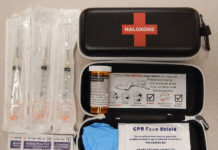Research from a student at Allegheny College explored the inequalities of public schools’ drug abuse policies to see how they affect both drug usage and graduation rates.
Studying four different communities and school districts, Wyatt Boyler examined how the demographic, socioeconomic status, and crime rate influenced a school district’s school policy.
The U.S. has a large gap in the opportunities related to education, the report begins — much of it has to do with socioeconomic status and is dictated by many factors including substance abuse policy at the school district.
The research draws upon the policies of the ongoing War on Drugs; for example, students who use drugs may face the same punitive consequences found in the judicial system, which many critics argue are too punitive, too racially biased, and aren’t based on rehabilitative recovery in drug rehab centers.
African-American and Latino/Hispanic students are disciplined at higher rates for drug offenses in American public schools, the report finds, and this correlates with their higher dropout rates. While the dropout rates have been decreasing, incarceration rates for black and Latino doubled between 1980 and 1999.
The Educational Longitudinal Study ranked reasons for student dropouts in 2006 and found that 48.7 percent of dropout students were pushed out of the school district through violations, which include drug abuse. This suggests that instead of rehabilitating the young who are getting into drugs, the U.S. is incarcerating them, often leading them down the path of a life of crime and further drug use.
The disproportionate drug use in school districts with lower socioeconomic opportunities in relation to race suggests that these factors may be related to the overall high dropout rate between Latino and African-Americans.
A Child Trends graph in Boyler’s research depicts the rates of juveniles incarcerated up until the year 2014, and it shows that African-American and Latino students are disproportionately incarcerated in contrast with… (continue reading)
















